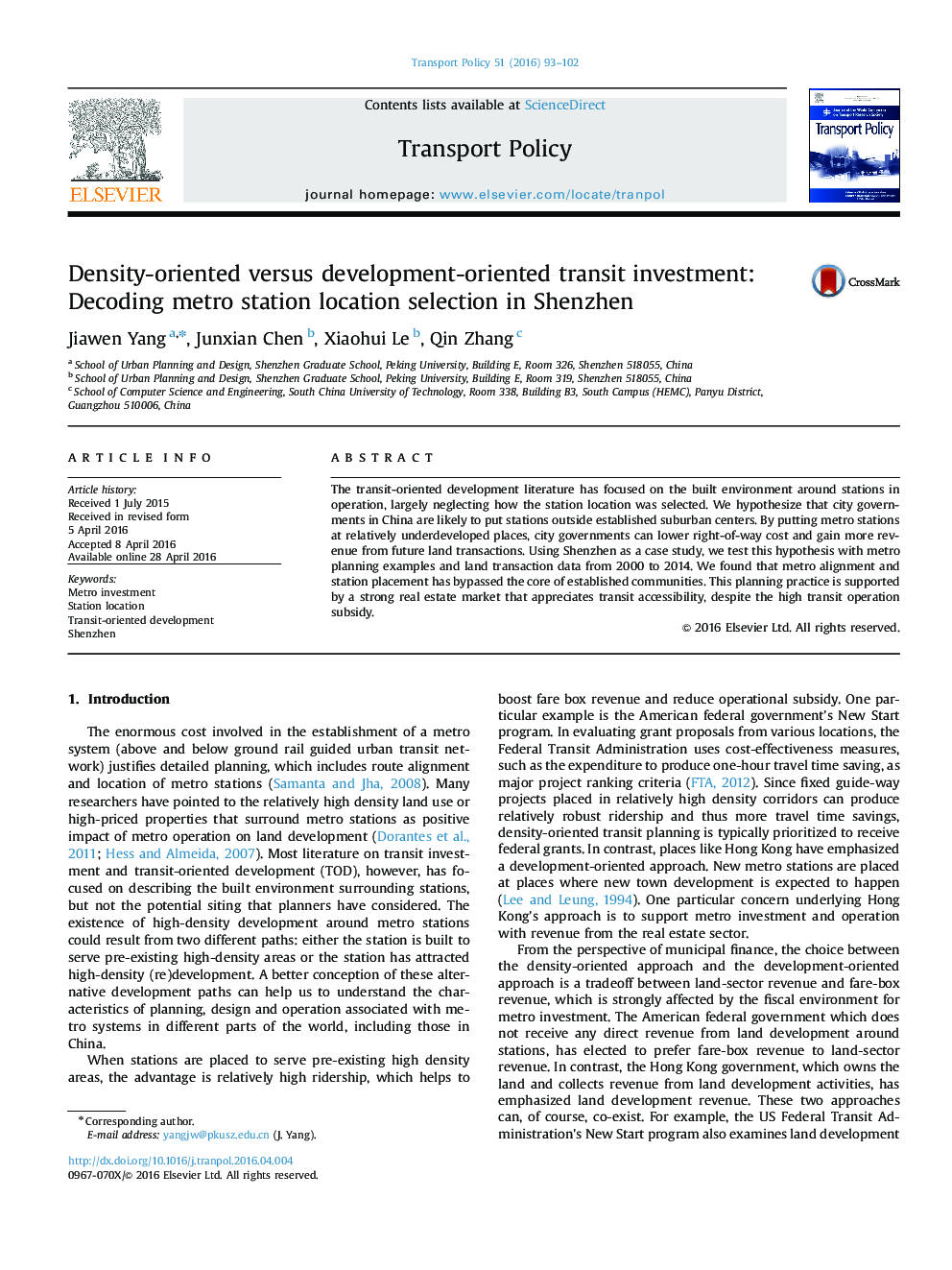| Article ID | Journal | Published Year | Pages | File Type |
|---|---|---|---|---|
| 5119189 | Transport Policy | 2016 | 10 Pages |
â¢Metro station location selection in Shenzhen bypasses the core of suburban communities.â¢This planning practice is driven by the desire to boost land development revenue.â¢Future changes in land taxation will affect metro planning.
The transit-oriented development literature has focused on the built environment around stations in operation, largely neglecting how the station location was selected. We hypothesize that city governments in China are likely to put stations outside established suburban centers. By putting metro stations at relatively underdeveloped places, city governments can lower right-of-way cost and gain more revenue from future land transactions. Using Shenzhen as a case study, we test this hypothesis with metro planning examples and land transaction data from 2000 to 2014. We found that metro alignment and station placement has bypassed the core of established communities. This planning practice is supported by a strong real estate market that appreciates transit accessibility, despite the high transit operation subsidy.
